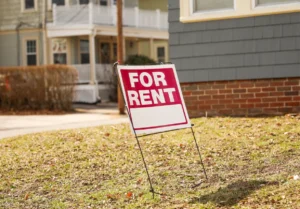5 Industry Trends That Will Shape 2022
 The rental property market changed a lot in the past year and shows no signs of slowing down.
The rental property market changed a lot in the past year and shows no signs of slowing down.
While the full impact of COVID-19 on the market is still a bit uncertain, there is no doubt that five industry trends picking up speed now will continue into the future.
In particular, these five trends will impact the rental property market in 2022: Virtual tours, online rent collection, evolving property manager-resident relationships, new generational values, and location.
Virtual Tours
Traditionally, when a tenant wanted to tour a rental property, that meant they needed to physically go and see it. A landlord, property manager, or someone representing them had to coordinate a time to arrive, show the property, and answer questions, and they often had to do this more than once for every unit. Tenants moving into a new city or who were busy during available tour times may have missed out on the property entirely.
A small fraction of landlords recognized these issues early on and began offering digital video tours. For the most part, though, landlords and property managers chose not to disrupt the status quo, even if it was a little inconvenient.
With the outbreak of COVID-19, relatively minor inconveniences became significant health risks, and in-person tours became extremely rare. Instead of taking their properties off the market, most real estate investors chose to offer remote tours.
According to a survey conducted by Entrata, 96% of property managers utilized virtual tours or self-guided tours during the pandemic. And this decision was one brought on by the pandemic, as 74% stated 2020 was the first year they had done so. Entrata also revealed that these same property managers classified virtual tours as the single most helpful technology during a challenging year.
Clearly, COVID-19 made digital tours a necessity, but that doesn’t mean landlords will abandon them in a post-pandemic future. A study conducted by the NAA found that 87% of property managers believe that digital communication (including virtual tours) is here to stay, and Appfolio found that 40% of renters want to have the option to view units virtually. This means that landlords will continue to find innovative ways to show properties through 2022.
Online Rent Collection
Like virtual tours, online rent collection became a key part of property managers’ operations during the pandemic. Although this had already been shifting gradually, adoption increased swiftly in 2020. According to a report by the National Landlord Association (NLA), the percentage of digital payments nearly doubled from 17% in Q4 of 2019 to 33% in Q4 of 2020.
More renters now realize the convenience and simplicity of online payments. Landlords also see the advantages of online rent collection in a new light. According to the same NLA study, outstanding rent for online payments was 20 times less than the average across all transaction methods. This is most likely due, in part, to automatic reminders that help renters pay promptly and the ease with which landlords receive the payments.
Online rent collection offers many benefits to traditional methods: it’s more convenient and efficient than other forms of payment, it’s germ-free, it increases the likelihood of on-time payments, it’s more appealing to younger generations who grew up with technology, and it allows for customized reporting (which leads to better business decisions for landlords). These benefits mean that adoption will only increase through 2022, especially with COVID-19 still lingering.
Evolving Property Manager-Resident Relationships
Before the pandemic, it wasn’t unheard of for tenants to have minimal contact with property managers. Property managers and tenants primarily communicated about maintenance issues or payment questions.
Post-pandemic, communication between property managers and residents expanded due to health protocol updates, amenity closure announcements, ongoing maintenance chats, rental assistance programs, and any required policy change notifications.
This heightened communication fostered greater trust between property managers and residents. Many landlords found creative ways to support tenants through challenging times (i.e., lease restructuring by waiving base rent for a few months and asking for it later). Tenants and landlords navigated unprecedented issues together.
It is unlikely that this increased communication will end with the pandemic. The pandemic showed that both parties benefit from cultivating stronger relationships. And that is valuable, no matter what is going on in the world.
New Generational Values
As younger generations begin to look for housing, their values will impact the market. Millennials have been making headlines for years because they tend to rent instead of buy, something that continues to impact the housing market today.
Gen Z, the latest generation to begin searching for housing, brings a desire for tech integrations and modern amenities. High-speed Wi-Fi, high-tech locks, and smart thermostats are a few examples of technology they value. They also prefer renting to buying.
Landlords are already starting to adapt to the changing desires of the marketplace. Technology is becoming more common in all aspects of rental properties. Many property managers and owners are experimenting with in-unit value-adds like motion-detector lighting, Bluetooth showerheads, and remote-access thermostats.
In addition to attracting more young renters, these amenities can also lower utility costs. Some energy companies offer financial incentives for installing energy-saving technologies.
Location, Location, Location?
In the past, location was a huge factor when it came to where people wanted to rent. If a property was close to work and their favorite hang-out spots, renters would often overlook certain limitations of the property itself. That is no longer the case.
The pandemic revealed that it’s possible in most industries—and even advantageous in some—for people to work from home. Many renters no longer need to commute, so they now place more emphasis on factors other than the distance to their workplace.
A 2020 survey by the Harris Poll showed that nearly one-third of Americans considered moving to a less densely populated area at the time. Reasons for this include remote work, better tax rates, and avoiding congested traffic. People often used to accept downsides like these due to the benefits of being close to work and entertainment. Now, many renters have the flexibility to move without considering proximity to an office location.
This trend reveals the new priorities of renters. Tenants now place a higher premium on great neighborhoods, convenient parking, modern appliances, technological safety and security features, and more. And with more employers adopting remote work policies, this shift in priorities is likely here to stay.
Conclusion
When it comes to the rental property market, the future is here. Technology will continue to expand and evolve, and new attitudes and values will continue to reshape the market in 2022. Increased communication between landlords and tenants will remain important, but proximity to work isn’t the priority it once was.
As the market enters this new era, the landlords who adapt to these changes will thrive. Innovation will play a key part in the evolving rental property landscape in 2022 and beyond.
About Us
Innago is a free, easy-to-use property management software solution, designed to save you time & money. Innago allows you to easily: collect rent, screen tenants, list properties, manage work orders, create applications, sign leases, organize financials, communicate with tenants, & much more! Learn more here













 Accessibility
Accessibility